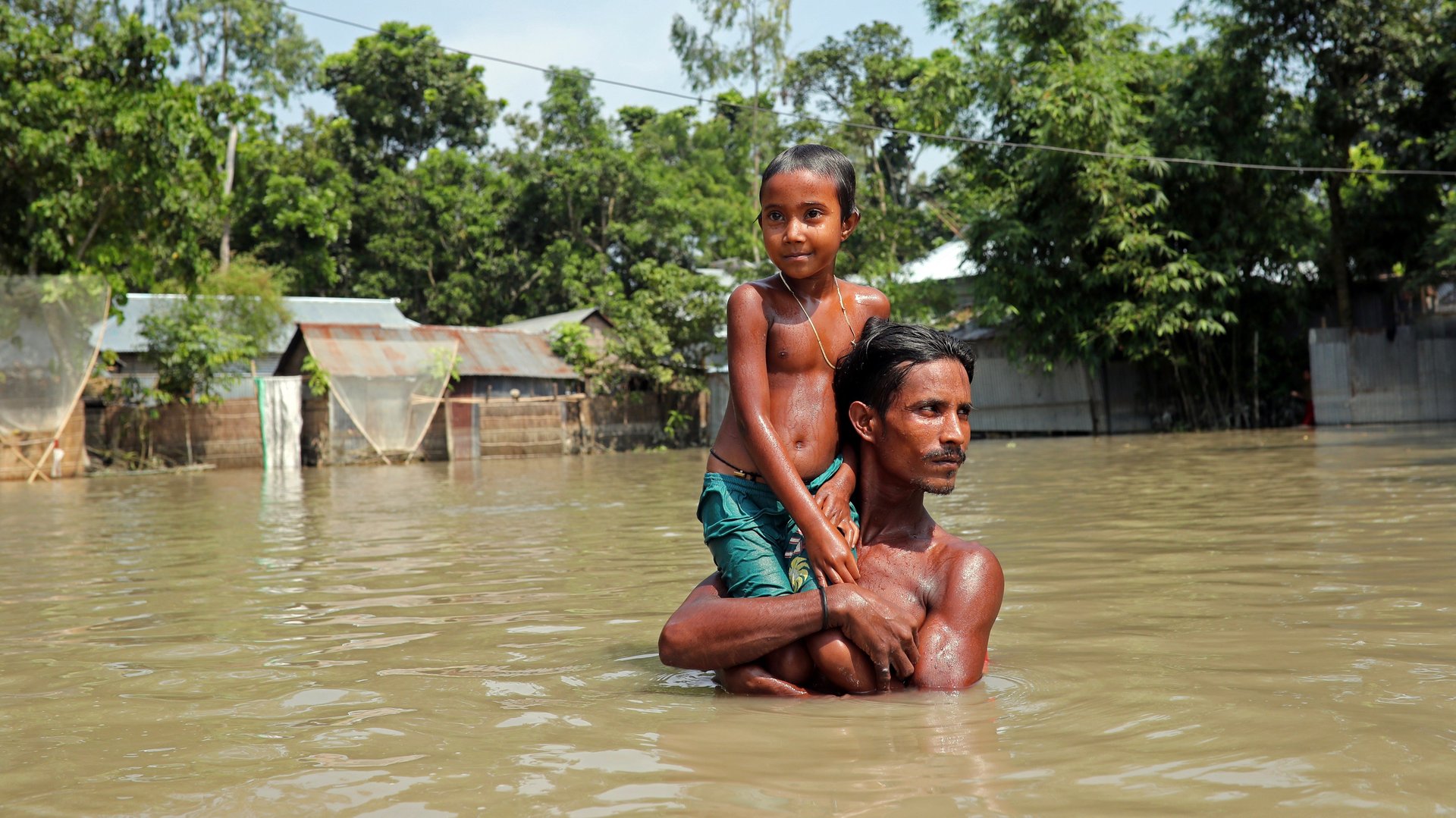Is forecast-based financing the future of aid in the face of climate change?
Traditionally, disaster victims have received assistance after trouble hits. If a region is flooded, say, people in the area may get aid to rebuild. But a new approach to humanitarian giving is flipping the script and offering help in advance of disaster, using in-depth weather forecasting and risk analysis to predict future victims.


Traditionally, disaster victims have received assistance after trouble hits. If a region is flooded, say, people in the area may get aid to rebuild. But a new approach to humanitarian giving is flipping the script and offering help in advance of disaster, using in-depth weather forecasting and risk analysis to predict future victims.
Called forecast-based financing, the method has been developed by the Red Cross and Red Crescent Movement with partners since 2007. The Red Cross Red Crescent Climate Centre has taken the scientific lead (pdf), mapping out which predictive tools are needed, the weather thresholds that must be reached to trigger automatic assistance, and who will benefit from aid. The method was most recently used by the government of Bangladesh to help 25,000 people in the flood-prone Kurigram district.
Vulnerable populations received aid money via their mobile phones ahead of extreme flooding this month, Reuters reports. The assistance allows potential victims to escape danger before disaster strikes and to stock up on supplies while waiting for the extreme weather to pass and their lives to resume.
Parvin Begum, who lives on a secluded island in northern Bangladesh, was one of the recipients. Her home was flooded this month, but before the waters rose to dangerous levels, she was able to use the cash she received under the new program to buy food, rent a boat, and escape to a government shelter nearby. “This is one of the worst floods I have seen in many years,” she told Reuters.
Begum is among the luckiest victims. Already, 114 people have died due to the flooding. Bangladesh’s disaster management and relief ministry says that nearly 3 million people are struggling with the impacts of the floods locally.
The Red Cross website explains that “a key element” of the predictive aid approach is that “the allocation of financial resources is agreed in advance, together with the specific forecast threshold that triggers the release of those resources for the implementation of early actions.” The method allows government agencies, aid groups, and those vulnerable to extreme weather events to prepare for disaster in advance and ensures that all parties can be more organized ahead of and during an emergency. It anticipates problems rather than reacting to them after the fact.
There are three components (pdf) to forecast-based financing—triggers, early actions, and financing mechanisms. In order to implement a predictive program in a given region, “impact levels” are identified by doing a risk analysis based on prior natural disasters and hazards, and a trigger model is developed. This helps to determine at what point early aid actions should happen to be most impactful in minimizing the effects of extreme weather. Each region must then also determine what type of aid is called for by a weather event, be it providing veterinary assistance or transferring cash to vulnerable populations, among other options. Finally, aid groups and governments must develop a method for providing timely assistance when forecasts show that a trigger point has been reached.
One concern about the new approach is that aid recipients will use the predictive assistance for something other than disaster relief. For example, Shah Kamal, secretary of Bangladesh’s disaster ministry, told Reuters the local forecast-based financing project can only succeed if recipients “invest it right.”
But the approach has already been tested in eight other climate-related emergencies and proven successful, according to Red Cross spokeswoman Maherin Ahmed. She notes that research shows that forecast-based funding makes more effective use of emergency aid. The organization believes that acting in advance of climate disaster, rather than waiting for the worst to happen, will save lives and livelihoods.